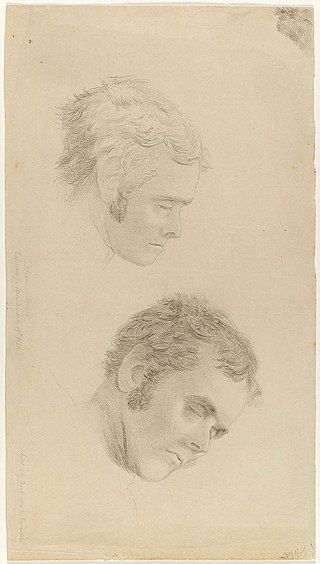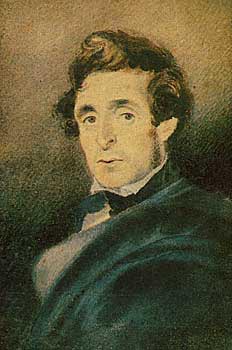The history of Tasmania begins at the end of the Last Glacial Period when it is believed that the island was joined to the Australian mainland. Little is known of the human history of the island until the British colonisation of Tasmania in the 19th century.

Strahan, is a small town and former port on the west coast of Tasmania. It is now a significant locality for tourism in the region.

Macquarie Harbour is a shallow fjord in the West Coast region of Tasmania, Australia. It is approximately 315 square kilometres (122 sq mi), and has an average depth of 15 metres (49 ft), with deeper places up to 50 metres (160 ft). It is navigable by shallow-draft vessels. The main channel is kept clear by the presence of a rock wall on the outside of the channel's curve. This man-made wall prevents erosion and keeps the channel deep and narrow, rather than allowing the channel to become wide and shallow. A reported Aboriginal name for the harbour is Parralaongatek.

West Coast Council is a local government body in Tasmania, covering much of the western region of the state. West Coast is classified as a rural local government area and has a population of 4,167. The major towns and localities of the region include Strahan, Rosebery, Zeehan and the principal town of Queenstown.

Zeehan is a town on the west coast of Tasmania, Australia 139 kilometres (86 mi) south-west of Burnie. It is part of the West Coast Council, along with the seaport Strahan and neighbouring mining towns of Rosebery and Queenstown.

The Macquarie Harbour Penal Station, a former British colonial penal settlement, established on Sarah Island, Macquarie Harbour, in the former colony of Van Diemen's Land, now Tasmania, operated between 1822 and 1833. The settlement housed male convicts, with a small number of women housed on a nearby island. During its 11 years of operation, the penal colony achieved a reputation as one of the harshest penal settlements in the Australian colonies. The formal penal station is located on the eight-hectare (twenty-acre) Sarah Island that now operates as a historic site under the direction of the Tasmania Parks and Wildlife Service.

Raffaele Marcellino is an Australian composer.

Alexander Pearce was an Irish convict who was transported to the penal colony in Van Diemen's Land, Australia for seven years for theft. He escaped from prison several times, allegedly becoming a cannibal during one of the escapes. In another escape, with one companion, he allegedly killed him and ate him in pieces. He was eventually captured and was hanged in Hobart for murder, before being dissected.

The West Coast of Tasmania has a significant convict heritage. The use of the west coast as an outpost to house convicts in isolated penal settlements occurred in the eras 1822–33, and 1846–47.

Hells Gates is the name of the mouth of Macquarie Harbour on the West Coast of Tasmania, Australia.

Richard Innes Davey was an Australian actor, director and writer. He was the founder of the Round Earth Company and advocate for the understanding of the Macquarie Harbour Penal Station on Sarah Island on the West Coast of Tasmania.
Trial Harbour is a rural locality in the local government area (LGA) of West Coast in the North-west and west LGA region of Tasmania. The locality is about 20 kilometres (12 mi) south-west of the town of Zeehan. The 2016 census has a population of 24 for the state suburb of Trial Harbour.

For the Term of His Natural Life is a story written by Marcus Clarke and published in The Australian Journal between 1870 and 1872. It was published as a novel in 1874 and is the best known novelisation of life as a convict in early Australian history. At times relying on seemingly implausible coincidences, the story follows the fortunes of Rufus Dawes, a young man transported for a murder that he did not commit. The book clearly conveys the harsh and inhumane treatment meted out to the convicts, some of whom were transported for relatively minor crimes, and graphically describes the conditions the convicts experienced. The novel was based on research by the author as well as a visit to the penal settlement of Port Arthur, Tasmania.
Thomas Bather Moore was a pioneer explorer of Western and South West, Tasmania, Australia.
Mount Strahan is a mountain located on the West Coast Range in the West Coast region of Tasmania, Australia. With an elevation of 855 metres (2,805 ft) above sea level, the mountain is situated directly east of Macquarie Harbour and, like Mount Sorell, dominates the east side of the harbour near Sarah Island.
James Kelly (1791–1859) was an Australian mariner, explorer and port official.

William Buelow Gould was an English and Van Diemonian (Tasmanian) painter. He was transported to Australia as a convict in 1827, after which he would become one of the most important early artists in the colony, despite never really separating himself from his life of crime.
The Frederick escape was an 1834 incident in which the brig Frederick was hijacked by ten Australian convicts and used to abscond to Chile, where they lived freely for two years. Four of the convicts were later recaptured and returned to Australia, where they escaped the death sentence for piracy through a legal technicality.

Cyprus was a brig launched at Sunderland in 1816. The colonial government in Van Diemen's Land purchased her in 1826. In 1829 as she was transporting convicts from Hobart Town to Macquarie Harbour Penal Station, some of the convicts seized Cyprus. They sailed her via Japan to Canton, where they scuttled her.

The Ship That Never Was is a 1984 Australian stage pantomime by Richard Davey based on the 1834 Frederick escape.















